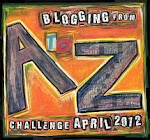I Is for Ignorance
Way back in the early days of D&D, playing a monster as a character posed certain difficulties. Chief among these was that most monsters didn’t have any ability scores other than a general range for Intelligence. Monsters (as opposed to NPCs with class levels) and PCs weren’t built using the same rules. Indeed, there were few rules for building monsters at all. Sure, if a GM wanted to let you play a troll as a character, he could, but there really wasn’t any defined way to balance the troll’s abilities against those of regular PCs. If you wanted to build a new monster, you just sort of built it, maybe not quite willy-nilly but definitely without lots of hard-fast guidelines about Hit Dice, Armor Class, et cetera.
Enter 3E D&D. All of a sudden, monsters have the full range of ability scores (barring special cases such as undead — no Constitution — and vermin — no Intelligence). Monsters have types, which are sort of like character classes. The monster’s type determines Hit Dice, skill points, which skills count as class skills, and usually what can be viewed as racial abilities. Monsters also get feats pretty much the same way PCs do, and they choose those feats from pretty much the exact same list as the PCs. Monsters could be played as normal characters thanks the inclusion of Level Adjustments, a system almost universally panned as being, at best, deeply flawed. On the plus side, the conformation of monsters to basically the exact same rules used to create PCs was almost universally declared a Good Thing. I’m in agreement, but with one caveat.

I’ve seen an increase in the amount of metagaming about monster abilities. The players (rather than the GM) have built their PCs, and they understand that the monsters are pretty much built using the same rules. Too many players then decide that this means that they can reverse engineer monsters during game play, and that those parts of a monster that don’t reverse engineer are somehow wrong.
I’ll toss out two examples to playfully tweak one of my players. Once upon a time, I ran an adventure where the PCs encountered some undead monstrous vermin. When it was painfully discovered that these zombie vermin were venomous, complaints ensued, such as, “But they don’t have Constitution scores. They can’t have poison.” Or, “That ability is lost when applying that template.” Another time the PCs met mummified hell hounds. The mummified hell hounds, much like non-mummified hell hounds, were immune to fire, which prompted complaints that “Mummies are vulnerable to fire. They shouldn’t be immune to fire if they’re mummies, because all mummies have that vulnerability.”
And thus we arrive at i being for ignorance.
What I want is a perfect game where the players (rather than the GM) are completely clueless about the rules that monsters follow. The players don’t know what a template is. They don’t know that a dragon’s breath weapon’s save DC is based on Constitution. Et cetera. Instead, they accept the game world as it is revealed to them, and have their characters react to that world, not the presumed rules violations embodied by a particular encounter.
Barring that, folks can just agree to stop the metagamey reverse engineering and work more on roleplaying their characters’ reactions.
“I hit the mummified hound thing with a scorching ray.”
“The searing flames of the spell have no apparent effect. The mummified hound charges to attack.”
“Ye gods! What manner of mummies are these, that they are immune to fire?”
Note the difference in the character’s reaction. It’s in-character. It also opens up the possibility for the character to learn the answer to his question, whether through something as simple as a Knowledge skill check or as involved as searching through musty tomes in the city library while consulting the sages.
“Huh, those mummified hounds were created from the corpses of hell hounds, which, even after the mummification process, retain their fiendish resistance to fire. They are, however, particularly vulnerable to cold. I must remember this…just in case.”


Leave a Reply